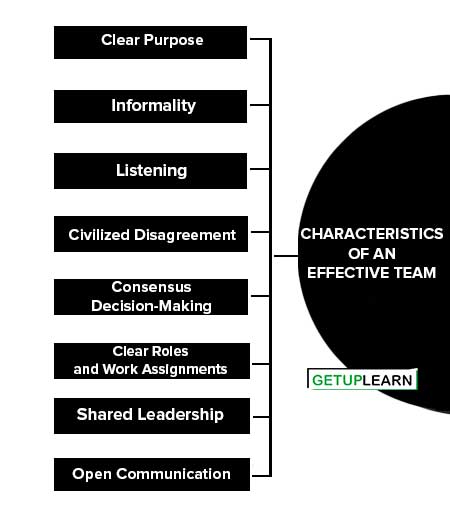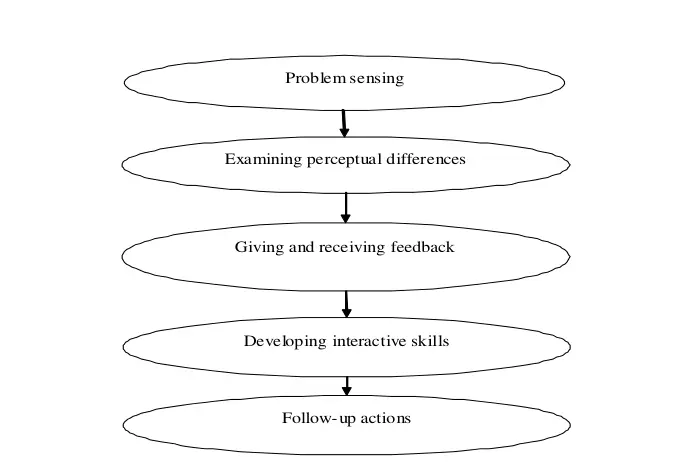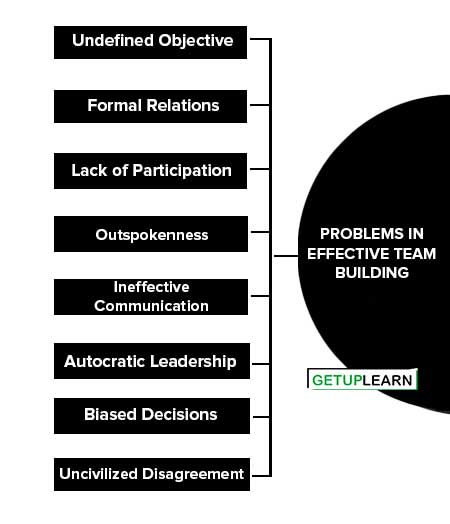Table of Contents
What is Team Intervention?
Interventions are techniques and methods designed to change the culture of the organization. It enables the organizational members to improve their practice so that they may better accomplish individual, team, and organizational goals.
Most of the organization’s work is accomplished directly or indirectly through teams. Before understanding team intervention, it is important to make a distinction between groups and teams.
Definition of Team Building
A work group is a number of persons, usually reporting to a common superior and having some face-to-face interaction, who have some degree of interdependence in carrying out tasks for the purpose of achieving organizational goals.
Getuplearn
A team is a small number of people with complementary skills who are committed to a common purpose, set of performance goals, and approach for which they hold themselves mutually accountable.
Jon Katzenbach and Douglas Smith
A team is a form of group, but has some characteristics in greater degree than ordinary groups, including a higher commitment to common goals and a higher degree of interdependency and interaction.
Getuplearn
Characteristics of an Effective Team
Let’s look at the characteristics of an effective team:
- Clear Purpose
- Informality
- Listening
- Civilized Disagreement
- Consensus Decision-Making
- Clear Roles and Work Assignments
- Shared Leadership
- Open Communication

Clear Purpose
An effective team is clearly defined and accepted by the organization. It has a definite vision, mission, goal, or task and an action plan.
Informality
An effective team is mostly informal, comfortable, and relaxed. The team members of an effective team share an informal relationship and are comfortable with each other.
Listening
For making an effective team, the team should use effective listening techniques like questioning, paraphrasing, and summarizing.
Civilized Disagreement
An effective team should be comfortable with disagreements made by members. They should not avoid problems and be smooth over conflicts. Also, they should very well know how to suppress conflicts.
Consensus Decision-Making
An effective team makes consensus decision-making through substantial agreement with thorough discussion and avoidance of voting.
Clear Roles and Work Assignments
Each team member has defined roles and work assignments. They have clear expectations and evenly divided work.
In addition to being a formal leader, everyone in the team shares ineffective leadership behaviors.
Open Communication
There are open communications held in the team. There is a feeling of being legitimate and aware. All problems, causes, agendas, and issues are unhidden by everyone.
Team Building Process
The process of team building intervention starts with problem sensing followed by examining the differences, giving feedback, and finally ends with developing the skills. Below given figure represents step-by-step actions of team building intervention.
- Problem Sensing
- Examining Differences
- Giving and Receiving Feedback
- Developing Interactive Skills
- Follow Up Action

Problem Sensing
There are a number of ways in which the problems of a team can be identified. The major problem lies in those factors which hinder the team’s effectiveness. At this stage, most of the members come forward with their arguments as to what the real problems are.
There are different views at different levels ranging from organizational problems, group problems, and individual problems. While identifying the core problem, the emphasis should be on consensus (which means agreement by all). It helps each person to seek awareness and understand clearly the basic concepts of team development.
Examining Differences
There are many people in the organization belonging to various types of cultures and backgrounds. The perception of people on an issue differs because of different value systems, personalities, and attitudes.
This difference is examined through a number of psychological tests and exercises particularly on perceptual differences. Communication plays a very important role in this context because it helps in clarifying the actual problems to the members.
Giving and Receiving Feedback
The process of perceiving things and listening to the members may create a tense situation among them. All the members report the painful feelings that they have at the time of evaluation of their feelings. The discussion should continue until all members of the team have commented.
After then, feedback should be given to the members about their feelings, about the issue, the way people talk about the issue, the way people tried to resolve the issue, and the people who were involved in the issue. This helps the members to create an understanding and provides an opportunity to feel better about their feelings.
Developing Interactive Skills
This is the second last stage of this process where the focus falls into the main objective of the process i.e. increasing the ability among the people to how they should interact with others and engage in constructive behavior. Following are a few examples related to constructive and negative behaviors:
-
Constructive Behavior:
- Building: Developing and expanding the ideas of others.
- Bringing in: Harmonizing, and encouraging others to participate.
- Clarifying: Resting, ensuring, understanding, and seeking relevant information.
-
Innovating: Bringing in new relevant ideas, information, feeling, etc.
-
Negative Behavior:
- Overtalk: Interrupting, talking together with the speaker.
- Attacking: Deriding, belittling, or criticizing a person.
- Negative: Cooling, cynicism, undermining morale.
Follow Up Action
The final stage of the team building process is that the total team is called together to review what has been learned and to identify what the next step should be.
This action helps in overcoming the drawback involved in the initial stages of team building. It also involves deciding who will take care of each area of the team’s responsibilities and who will be responsible for team projects in a group.
Overall, these attempts help in bringing cooperative and supportive feelings among people involved in the team functioning. It brings positivity among the people. To encourage people and sustain such feelings, management should take such actions at regular intervals so that members feel reinforced and sustain their positive behavior.
Problems in Effective Team Building
These are the problems in effective team building in organizations:
- Undefined Objective
- Formal Relations
- Lack of Participation
- Outspokenness
- Ineffective Communication
- Autocratic Leadership
- Biased Decisions
- Uncivilized Disagreement

Undefined Objective
One of the major problems that arise in team building is that members of the team do not have specific and clear information about the objective of the organization.
Formal Relations
Most of the time members of the organization get too formal while sharing the problems and solution of a given problem. This hinders their potential and ability to resolve the actual problems of the organization.
Lack of Participation
When members do not participate in the team with full interest and dedication, it again becomes a barrier to effective team building.
Outspokenness
As we have discussed that there are some people who hesitate to share their viewpoints, so there are a few people in the team who get outspoken and do not listen to others. They do not listen and question their solutions. This makes others uncomfortable and demotivated for their suggestions and hence it hinders effective team building.
Ineffective Communication
If open lines of communication do not flow within the team, then agendas and action plans remain hidden from the members, and thus effective team building lacks thereon.
Autocratic Leadership
There is a probability that team leaders believe in autocratic leadership. It means that lack of shared leadership. This disables others to communicate effectively and hence it acts as a barrier to team building.
Biased Decisions
If the decisions taken are biased and are not with consensus /agreed by all the members of the team, then this hinders effective team building.
Uncivilized Disagreement
Uncivilized disagreement means when members of the team raise unnecessary questions about each other vision.
When an employee does not agree to what other team members are agreeing to, it happens to create unrest in the team. Also, this makes a violent attitude in all the team members and hence team building effectiveness gets disturbed.
FAQs Section about Team Building Interventions
What is a Team?
A team is a form of group but has some characteristics in greater degree than ordinary groups, including a higher commitment to common goals and a higher degree of interdependency and interaction.
What are the characteristics of an effective team?
The following are the characteristics of an effective team:
1. Clear Purpose
2. Informality
3. Listening
4. Civilized Disagreement
5. Consensus Decision-Making
6. Clear Roles and Work Assignments
7. Shared Leadership
8. Open Communication.
What is the team-building process?
These are the steps of the team-building process:
1. Problem Sensing
2. Examining Differences
3. Giving and Receiving Feedback
4. Developing Interactive Skills
5. Follow-Up Action.
What are the problems in effective team building?
The following are the problems in effective team building:
1. Undefined Objective
2. Formal Relations
3. Lack of Participation
4. Outspokenness
5. Ineffective Communication
6. Autocratic Leadership
5. Biased Decisions
6. Uncivilized Disagreement.
